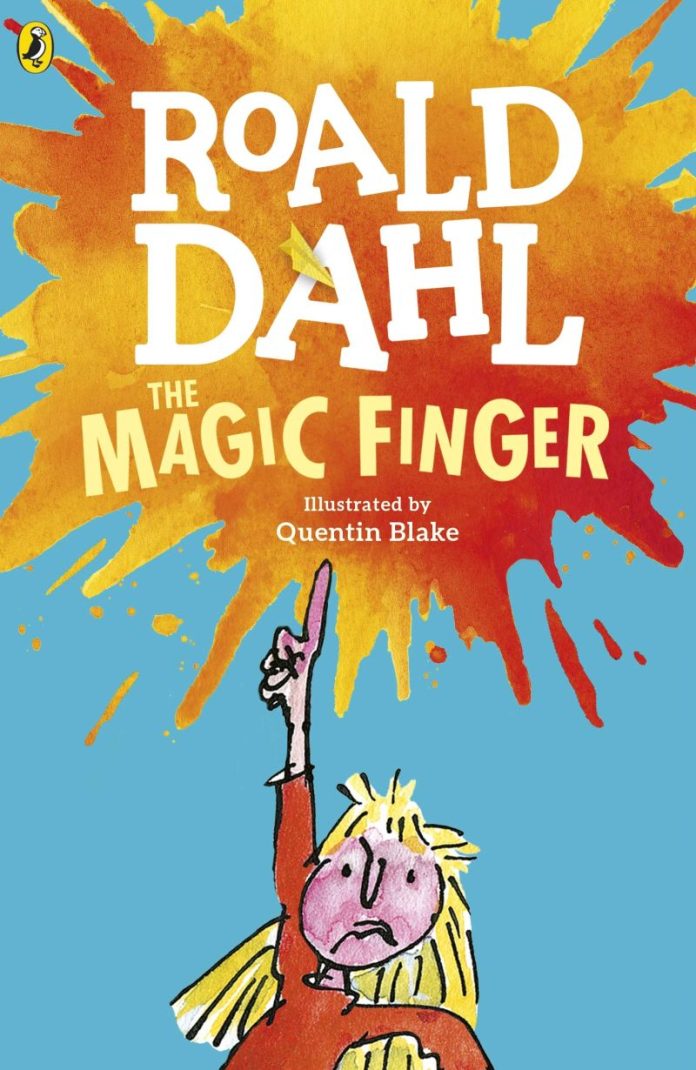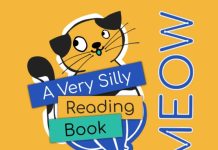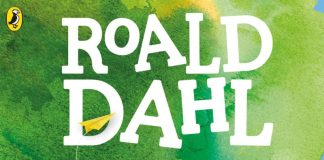School reports described Roald Dahl as “… an indolent and illiterate member of the class” and “Consistently idle. Ideas limited”. He didn’t let that stop him and he became one of the world’s greatest storytellers whose books are still being sold and enjoyed by children all around the world today.
In 1966 he wrote and published The Magic Finger, a short children’s fantasy story about an 8 year old girl who when she gets angry her magic finger can have disastrous consequences for its recipients.
It is a story about hunting, compassion, kindness, forgiveness, anger and of course a magic finger. The story is narrated by an 8-year-old girl (we never find out her name and she is referred to throughout the book as Girl) who lives on a remote rural farm next door to the Greggs who have a passion for hunting. She is a normal child until something gets her angry and then her magic finger comes to the fore. The consequences of getting on the wrong side of her anger and finger are not inconsequential. The book is not about her telling her own story, but telling the story of her friends and neighbours, The Greggs.
We already know that Girl has a magic finger. That sounds great, doesn’t it? Who wouldn’t like to have their own magic finger? In Girl’s case, when she gets angry, the red mist comes down and she puts her magic finger on you which is something that you really don’t want to happen – when she got cross with her teacher, in a flash, her poor old teacher grew whiskers and a tail, just like a cat! When injustice calls, the Girl’s magic finger confronts the problem and turns people into animal hybrids to teach them a lesson they will never forgot.
So we know a little bit about Girl, but what about the Greggs?
The Greggs own a rural farm (not the high-street bakers) in the English countryside and are neighbours of Girl. There is Mr and Mrs Gregg, 11-year-old William and 8-year-old Philip. Girl is friends with Philip and William, and they all play together, but she really doesn’t like it when they go hunting. They go hunting for the thrill of the kill, shooting as many animals as they can just because they can. One day when they go off on another hunt, Girl sees red and out comes her magic finger, pointing a curse on the entire Gregg family. After the mindless killing of 16 ducks, things start to change. 4 ducks turn on them and force them home for the night. Overnight the Gregg family shrink in size and their arms are replaced with wings. They have changed into duck/human hybrids. On taking flight and enjoying the freedom of flying they notice four enormous ducks in their garden, but these weren’t just large ducks – they now have arms instead of wings! And the tables have been turned. The Greggs are now without a home and the ducks have taken over their house and the ducks want revenge.
Overall, The Magic Finger is a captivating and easy read. Dahl’s use of alliteration and language is simple but rich and easy to read. Children will have no problems understanding or reading the story. It is also fascinating enough for an adult reader – Dahl has an excellent use of language that appeals to both children and adults. Dahl’s famous dry humour and wit really comes through.
Whilst the initial story is of a girl, her anger, injustice and her magic finger, the underlying story is of compassion, kindness and forgiveness. The Greggs begin the story having no compassion for animals, but after the magic finger turns the tables and forces them to spend the night living as ducks and getting a taste of their medicine, they learn compassion and manage to change their ways. It helps young readers understand that the hunting of animals for sport is wrong and that the things you do can have a big impact on other people’s (or in this case, ducks) lives. By reversing the roles, it shows how looking at things from the opposite point of view can bring things into focus with crystal-clear clarity.
The Magic Finger is a fun, fantastic fantasy story and thought-provoking read that is still relevant today even though it was written nearly 60 years ago, and it doesn’t feel in anyway stale or outdated.
Rating: 5/5
RRP: £5.99 (Paperback) / £4.99 (Kindle)
For more information, visit www.roalddahl.com. Available to buy from Amazon here.






